What is an Artificial Intelligence Robot? Definition, Applications, and Types

#AI_Robot (Artificial Intelligence Robot) is a combination of two advanced technology fields: robotics and artificial intelligence.
Simply put, an AI robot is a physical machine that, using #Artificial_Intelligence algorithms and models, is capable of performing tasks that typically require human intelligence.
These tasks can include learning, reasoning, problem-solving, perception, and interaction with the surrounding environment.
The applications of AI robots are vast and diverse.
Some of these applications include:
Industry: Intelligent robots are used in production lines, packaging, warehousing, and material handling.
These robots can work with higher precision and speed than humans, thereby increasing productivity.
Medicine: Surgical robots, rehabilitation robots, and nursing robots are examples of AI robot applications in the medical field.
These robots can assist in complex surgeries, provide rehabilitation services to patients, and care for the elderly and disabled.
Services: Waiter robots, cleaning robots, and guide robots are used in shopping centers, airports, hotels, and other public places.
These robots can help customers find products, clean the environment, and provide information.
Education: Teacher robots, educational assistance robots, and educational game robots are used in schools and universities.
These robots can help students learn new concepts, complete assignments, and develop skills.
Military: Warrior robots, spy robots, and mine-clearing robots are used in armies.
These robots can assist soldiers in dangerous missions, intelligence gathering, and mine neutralization.
Types of AI robots can be categorized based on their application, movement type, and level of intelligence.
Some of the most common types of AI robots include industrial robots, service robots, medical robots, educational robots, and military robots.
Does your current corporate website present a deserving image of your brand and attract new customers?
If not, turn this challenge into an opportunity with Rasaweb’s professional corporate website design services.
✅ Significantly improves your brand credibility and image.
✅ Paves the way for attracting new leads and customers.
⚡ For a free and specialized consultation, contact Rasaweb now!
Main Components of an AI Robot
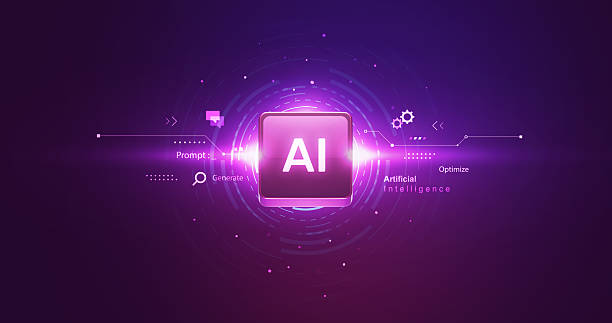
An #AI_Robot is composed of various components, each playing an important role in its operation.
These components include:
Sensors: Sensors collect information about the surrounding environment.
This information can include temperature, light, sound, image, distance, pressure, and other physical parameters.
Processor: The processor processes the information collected by the sensors and makes decisions.
The processor is usually a computer or microcontroller programmed with #Artificial_Intelligence algorithms.
Motors and Actuators: Motors and actuators enable the robot to move and interact with the environment.
These components can include electric motors, hydraulic motors, pneumatic motors, and other types of actuators.
Power Source: The power source provides the energy required for the robot’s operation.
This source can include batteries, AC power supplies, or solar cells.
Software: Software is a set of instructions that tells the robot how to operate.
This software can include AI algorithms, operating systems, and applications.
For a deeper understanding of this section, you can refer to the Wikipedia Artificial Intelligence page.
In addition to these components, some AI robots may also have other components, such as cameras, microphones, speakers, and displays.
These components allow the robot to interact with humans and other robots.
The operation of an #AI_Robot is such that sensors collect information about the surrounding environment, the processor processes the information and makes decisions, motors and actuators move the robot, and software controls the robot’s functionality.
Artificial Intelligence Algorithms Used in Robots
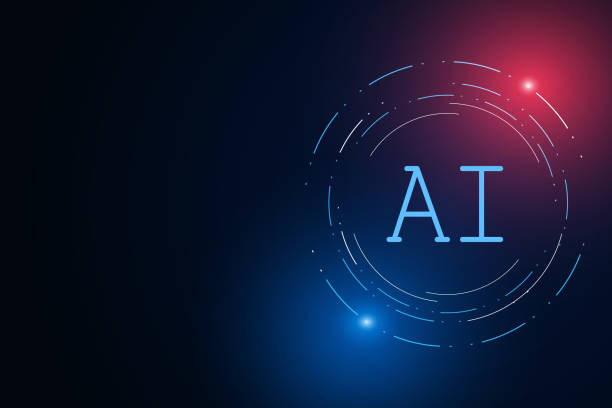
Artificial intelligence algorithms play a fundamental role in the capabilities of an #AI_Robot.
These algorithms allow the robot to learn, reason, solve problems, perceive, and interact with the environment.
Some of the most common AI algorithms used in robots include:
Machine Learning: Machine learning allows the robot to learn from data and improve its performance without being explicitly programmed.
There are different types of machine learning algorithms, including supervised learning, unsupervised learning, and reinforcement learning.
Neural Networks: Neural networks are computational models inspired by the structure of the human brain.
These networks can be used to learn complex patterns and relationships in data.
Natural Language Processing: Natural language processing allows the robot to understand human language and interact with it.
These algorithms can be used for language translation, answering questions, and generating text.
Machine Vision: Machine vision allows the robot to understand images and videos.
These algorithms can be used for object detection, face recognition, and motion tracking.
Planning: Planning allows the robot to plan a series of actions to achieve a specific goal.
These algorithms can be used for pathfinding, scheduling, and resource allocation.
The choice of the appropriate algorithm for an #AI_Robot depends on the type of tasks the robot needs to perform.
For example, a robot designed for object detection requires machine vision algorithms, while a robot designed for language translation requires natural language processing algorithms.
| Algorithm | Application |
|---|---|
| Machine Learning | Learning from data and improving performance |
| Neural Networks | Detecting complex patterns and relationships |
| Natural Language Processing | Understanding and interacting with human language |
| Machine Vision | Understanding images and videos |
| Planning | Planning actions to achieve a goal |
Challenges and Limitations in Developing AI Robots

The development of #AI_Robot faces numerous challenges and limitations.
Some of these challenges and limitations include:
High Cost: Developing and building AI robots is usually very expensive.
This cost includes research and development expenses, component and material costs, and labor costs.
Technical Complexity: Developing AI robots is a complex process that requires expertise in various fields, including robotics, artificial intelligence, electrical engineering, and mechanical engineering.
Hardware Limitations: The hardware required for AI robots must be powerful, durable, and energy-efficient.
Developing such hardware is challenging.
Software Limitations: The software required for AI robots must be capable of learning, reasoning, problem-solving, and interacting with the environment.
Developing such software is challenging.
Ethical Issues: The use of AI robots can raise numerous ethical issues, such as privacy, security, and accountability.
Despite these challenges and limitations, the development of #AI_Robot is rapidly progressing.
With advancements in technology, AI robots are expected to play a more significant role in human lives in the future.
To overcome these challenges, researchers and engineers are working on developing new AI algorithms, more powerful hardware, and more sophisticated software.
They are also exploring ethical issues related to the use of AI robots to ensure that this technology is used responsibly.
Are you falling behind in the competition with large online stores?
Rasaweb, with its professional e-commerce website design, will bring your business online and increase your market share!
✅ Enhanced brand credibility and customer trust
✅ Easy shopping experience leading to more sales
⚡ Act now for a free website design consultation!
The Future of AI Robots
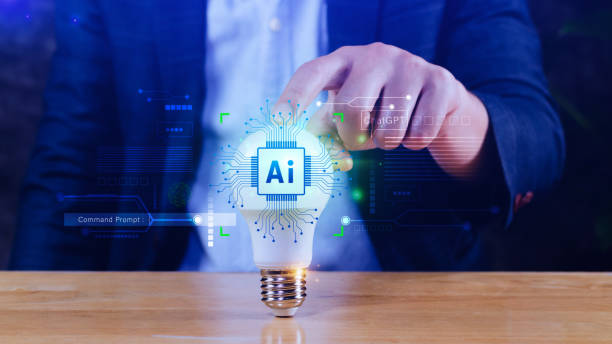
The future of AI robots is bright and full of potential.
With advancements in technology, AI robots are expected to play a more significant role in human lives in the future.
Some key trends we will witness in the future of AI robots include:
Increased Intelligence: AI robots will become smarter in the future and capable of performing more complex tasks.
This will be possible thanks to advancements in AI algorithms, more powerful hardware, and more sophisticated software.
Increased Autonomy: AI robots will become more autonomous in the future and capable of making decisions and acting independently.
This will be possible thanks to advancements in machine learning and planning algorithms.
Increased Interactivity: AI robots will become more interactive in the future and capable of more natural interaction with humans.
This will be possible thanks to advancements in natural language processing and machine vision algorithms.
Expansion of Applications: AI robots will be used in various fields in the future.
These fields include industry, medicine, services, education, military, and agriculture.
Cost Reduction: With technological advancements and increased production, the cost of AI robots will decrease in the future.
This will make AI robots more affordable for businesses and individuals.
Overall, the future of #AI_Robot is very promising.
AI robots can help humans perform difficult, dangerous, and repetitive tasks.
They can also help improve productivity, reduce costs, and enhance the quality of life.
The Impact of AI Robots on Economy and Employment

The development and widespread use of #AI_Robot will have profound impacts on the economy and employment.
These impacts can be both positive and negative.
Positive Impacts:
Increased Productivity: AI robots can work with higher precision and speed than humans.
This can lead to increased productivity and reduced costs.
Creation of New Jobs: The development and construction of AI robots will create new jobs in various fields, including robotics, artificial intelligence, electrical engineering, and mechanical engineering.
Improved Quality of Life: AI robots can help humans perform difficult, dangerous, and repetitive tasks.
This can lead to an improved quality of life.
Negative Impacts:
Job Displacement: AI robots can replace humans in many jobs.
This can lead to job displacement and an increase in unemployment rates.
Increased Inequality: Individuals who lack the necessary skills to work with AI robots may face difficulties in the job market.
This can lead to increased inequality.
Ethical Issues: The use of AI robots can raise numerous ethical issues, such as privacy, security, and accountability.
To maximize the positive impacts and minimize the negative impacts of the development and widespread use of #AI_Robot, governments, businesses, and individuals need to take action.
These actions include investing in education and training, supporting entrepreneurship, creating social safety nets, and formulating ethical laws and regulations.
Key Considerations in Designing and Building an AI Robot

Designing and building an #AI_Robot requires attention to various key considerations.
These considerations include:
Precise Goal Definition: Before starting to design and build a robot, its purpose must be precisely defined.
This goal should specify what tasks the robot must perform and what requirements it must meet.
Selection of Suitable Components: After defining the goal, suitable components for building the robot must be selected.
These components include sensors, processors, motors and actuators, power sources, and software.
Appropriate Mechanical Design: The mechanical design of the robot should enable it to move effectively, interact with its surroundings, and perform its tasks correctly.
Suitable Programming: The robot’s software must be programmed so that the robot can process information collected by sensors, make decisions, control motors and actuators, and interact with humans and other robots.
Testing and Evaluation: After building the robot, it must be thoroughly tested and evaluated to ensure its correct operation.
Any problems found should be fixed.
| Key Point | Description |
|---|---|
| Precise Goal Definition | Specifying the robot’s tasks and requirements |
| Selection of Suitable Components | Choosing appropriate sensors, processor, motors, and software |
| Appropriate Mechanical Design | Optimal design for movement and environmental interaction |
| Suitable Programming | Programming for information processing and robot control |
| Testing and Evaluation | Testing and troubleshooting potential issues |
In addition to these points, attention must be paid to safety and ethical issues in robot design and construction.
The robot must be designed to be safe for humans and the environment and not used for illegal purposes.
Also, individuals’ privacy must be respected, and information collected by the robot must be properly protected.
Differences Between AI Robots and Traditional Robots
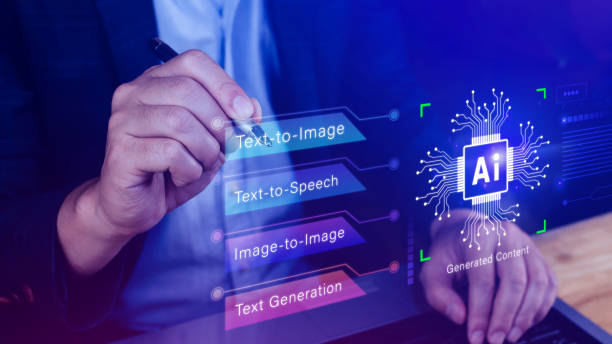
#AI_Robot has fundamental differences from traditional robots.
These differences are evident in their type of functionality, level of intelligence, and capabilities.
Type of Functionality: Traditional robots are typically designed to perform repetitive and pre-determined tasks.
These robots operate based on specific instructions and cannot make decisions in new and unexpected situations.
In contrast, AI robots are capable of learning, reasoning, problem-solving, and adapting to new situations.
These robots can make decisions and take appropriate actions based on data and information they collect from the environment.
Level of Intelligence: Traditional robots have a low level of intelligence and cannot perform complex tasks requiring thought.
In contrast, AI robots have a higher level of intelligence and can perform complex tasks requiring thought.
These robots can recognize patterns, understand human language, interpret images, and plan.
Capabilities: Traditional robots usually have limited capabilities and can only perform specific tasks.
In contrast, AI robots have broader capabilities and can perform various tasks.
These robots can be used in different fields such as industry, medicine, services, education, and military.
In summary, #AI_Robot is an intelligent machine capable of learning, reasoning, problem-solving, and adapting to new situations.
These robots have a higher level of intelligence than traditional robots and can perform more complex tasks.
For more differences, you can refer to the #Robotics Wikipedia page.
These differences mean that AI robots will play a more significant role in human lives in the future.
Did you know that poor online store design can drive away up to 70% of your potential customers? Rasaweb transforms your sales with professional and user-friendly e-commerce website designs.
✅ Significant increase in sales and revenue
✅ Full optimization for search engines and mobile
⚡ [Get a free consultation from Rasaweb]
The Role of AI Robots in Daily Life
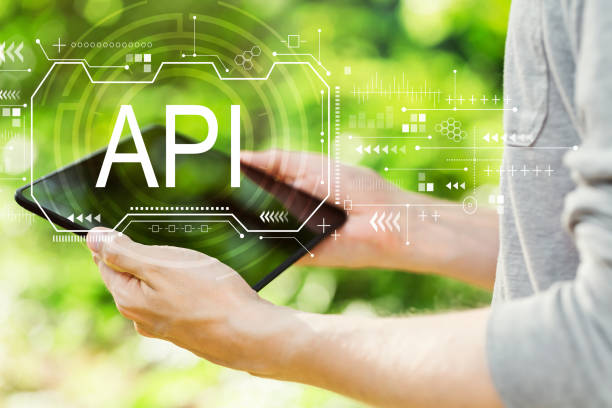
#AI_Robot is gradually entering our daily lives and playing a more significant role in this regard.
These robots can help us perform various tasks and make our lives easier and more efficient.
Housekeeping: Smart robots can help us with household chores such as cleaning, cooking, washing clothes, and caring for plants.
These robots can save us time and energy and allow us to focus on more important tasks.
Elderly and Disabled Care: Nursing robots can help us care for the elderly and disabled.
These robots can assist the elderly and disabled with daily tasks such as eating, dressing, and bathing.
Also, these robots can monitor the vital signs of the elderly and disabled and notify a doctor or nurse if any problem arises.
Education: Teacher robots can help us educate students.
These robots can help students learn new concepts, complete assignments, and develop skills.
Also, these robots can provide immediate feedback to students and help them evaluate their progress.
Transportation: Driverless robots can help us transport people and goods.
These robots can automatically navigate cars, trucks, and airplanes.
This can lead to a reduction in traffic accidents, reduced traffic congestion, and reduced air pollution.
Overall, #AI_Robot can play a role in various aspects of our daily lives and help us have an easier, more efficient, and safer life.
Ethical Issues Related to AI Robots
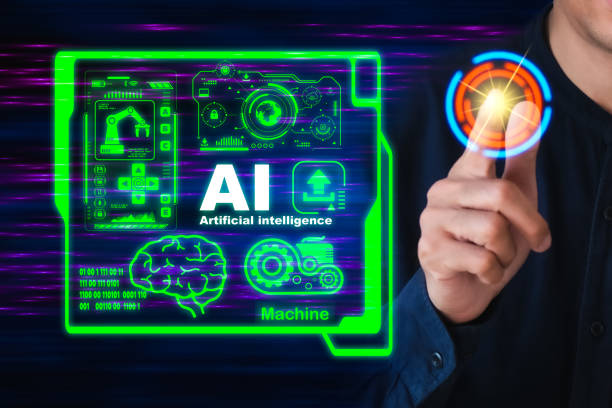
The development and widespread use of #AI_Robot have raised numerous ethical issues.
These issues include:
Privacy: AI robots can collect a lot of information about us, including personal information, financial information, and health-related information.
This information can be misused.
Therefore, it is necessary to formulate laws and regulations to protect individuals’ privacy from AI robots.
Security: AI robots can be hacked and used to carry out cyberattacks, steal information, or damage infrastructure.
Therefore, AI robots must be designed to be resistant to cyberattacks.
Accountability: In the event of any accident or damage caused by the operation of an AI robot, who will be responsible? Will the robot’s manufacturer, owner, or programmer be responsible? It is necessary to formulate laws and regulations to determine accountability for AI robots.
Discrimination: AI algorithms can be discriminatory and lead to unfair decisions.
For example, an AI algorithm used for hiring may unintentionally reject individuals belonging to specific groups.
Therefore, AI algorithms must be designed to be fair and unbiased.
Control: Who should control AI robots? Should governments, businesses, or individuals control these robots? Extensive discussion and dialogue are needed on how to control AI robots.
To resolve these ethical issues, governments, businesses, researchers, and ethics experts must collaborate to formulate ethical laws and regulations, design fair and unbiased algorithms, and create mechanisms for monitoring the performance of #AI_Robot.
These efforts can lead to the responsible and beneficial use of AI robots.
Frequently Asked Questions
| Question | Answer |
|---|---|
| What is an AI Robot? | An AI Robot is a machine capable of understanding its environment, reasoning, learning, and making decisions to perform tasks independently. |
| What is the difference between regular robots and AI robots? | Regular robots perform repetitive tasks based on prior programming, while AI robots can learn from experience, interact dynamically with the environment, and even behave in a way that resembles human intelligence. |
| What are the main applications of AI robots? | They are used in industries (manufacturing, assembly), medicine (surgery, diagnosis), services (customer support, domestic), exploration (space, underwater), and many other fields. |
| What technologies are used in the construction of AI robots? | Machine Learning, Computer Vision, Natural Language Processing, Deep Learning, and Robotics are among the key technologies. |
| Can AI robots have emotions? | Currently, robots do not have emotions in the human sense. They can identify emotions and react to them, but they do not experience emotions themselves. |
| What are the main challenges in developing AI robots? | Safety, reliability, ethics, autonomy, adaptability to complex environments, and natural human interaction are important challenges. |
| How are AI robots trained? | They are usually trained using large volumes of data, machine learning, and deep learning algorithms to identify patterns and make decisions. |
| Examples of AI robots in daily life? | Smart robotic vacuum cleaners, customer support chatbots, self-driving cars, and surgical robots in hospitals. |
| Are AI robots a threat to human jobs? | Some repetitive jobs may be automated, but at the same time, robots can increase productivity and create new jobs in the development, maintenance, and supervision of these systems. |
| How is the future of AI robots predicted? | They are expected to become smarter, more autonomous, and capable of performing more complex tasks, and to interact more closely with humans in various environments. |
And other services of Rasaweb Advertising Agency in the field of advertising
- Smart Advertising Campaign: An exclusive service for growth and SEO ranking improvement based on precise audience targeting.
- Smart Website Development: Designed for businesses seeking to manage campaigns through custom programming.
- Smart Custom Software: A novel service for increasing customer acquisition through the use of real data.
- Smart Press Release: A novel service for increasing customer acquisition through custom programming.
- Smart Custom Software: A novel service for improving SEO ranking through SEO-focused content strategy.
And over hundreds of other services in the field of online advertising, advertising consulting, and organizational solutions
Online Advertising | Advertising Strategy | Advertorials
Sources
Comprehensive Guide to AI Robots on Digikala Mag
Tutorial on Building a Smart Robot on Virgool
ISNA Report: The Future of Robotics and AI in Iran
Introduction and Review of AI Robot Types (Telewebion Blog)
✅ Rasaweb Digital Marketing Agency is specialized in providing comprehensive digital solutions for your business. From SEO strategies and content marketing to advanced e-commerce website design and targeted advertising campaigns, we transform your online presence.
📍 Tehran, Mirdamad Street, next to Central Bank, Kazeroun Jonoubi Alley, Ramin Alley, No. 6
